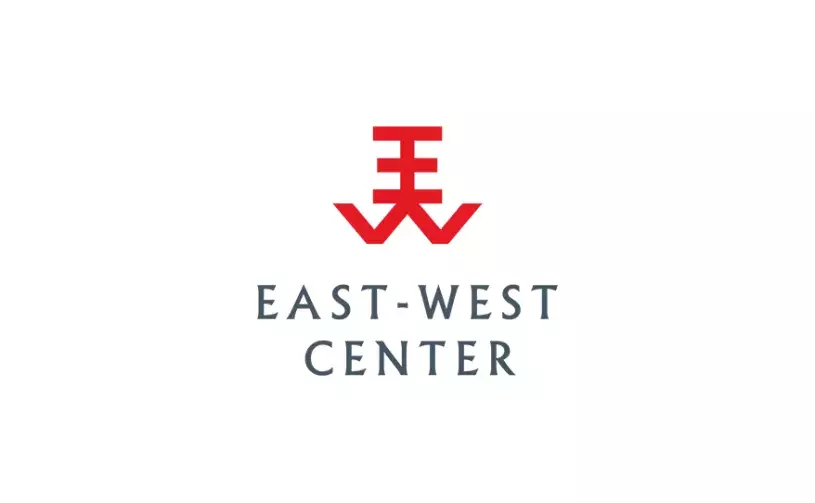Error message

By Joanna P. Estudillo
HONOLULU (March 30, 2018)—In 2015, 197 women in Lao People’s Democratic Republic (Laos) died from causes related to pregnancy or childbirth for every 100,000 live births. This was the highest maternal mortality ratio in Southeast Asia. By comparison, 178 women died per 100,000 live births in Myanmar, 161 in Cambodia, 58 in Vietnam, and 20 in Thailand.
Although maternal deaths in Laos are still unacceptably high, the number has gone down steeply—from 905 maternal deaths per 100,000 live births in 1990, a drop of 78 percent in 25 years. In fact, Laos was one of only nine countries in the world that achieved the United Nation’s Millennium Development Goal 5A—to reduce maternal mortality by 75 percent between 1990 and 2015. Today, the emphasis is on continuing this downward trend.
If women have access to good healthcare before, during, and after they give birth, a large number of maternal deaths can be prevented. In the United States, the maternal mortality ratio in 2015 was only 14 deaths for every 100,000 live births. In Canada, it was seven.
So what policies and programs made it possible for Laos to achieve a significant drop in maternal deaths since 1990? And what policies and programs need to be continued or expanded today to build on this important improvement in women’s health? Strategies recommended by the World Health Organization (WHO) to reduce maternal mortality include:
- Care during pregnancy: At least four visits to a skilled health provider to detect and prevent complications and to provide tetanus immunization and iron supplements
- Care during childbirth: Delivery in a healthcare facility and with a skilled health professional (doctor, nurse, or midwife) to prevent complications and to respond in case of an emergency
In 2012, the Laotian government introduced a national program to provide healthcare to pregnant women and their children free of charge. The government gives pregnant women fee exemptions for critical maternal-health services and provides them with cash payments to help cover their transport and opportunity costs when they seek healthcare.
As a result of this policy, Laotian women have experienced a significant increase in access to care during pregnancy and childbirth. Yet there is still room for improvement. In 2016, only six out of 10 pregnant women had at least four check-ups during pregnancy, only one-half delivered their babies in a public or private health facility, and only one-half were assisted during delivery by a health professional.
Who are the women who are not receiving this recommended level of care—the other one-half? Research shows that four factors hold women back from receiving critical maternal health services—poverty; residence in a remote area; level of education; and ethnic, linguistic, and cultural constraints.
Despite the introduction of government-subsidized health programs, poor women report that high out-of-pocket costs are the most serious impediment holding them back from seeking maternal health services. In 2012, fewer than 10 percent of pregnant women in the poorest one-fifth of the population received four or more check-ups, compared with more than 80 percent of the wealthiest women.
Only 11 percent of poor women gave birth in a health facility, and only 11 percent were assisted during childbirth by a health professional. Access to maternal healthcare was also extremely limited for women who lived in remote locations, had little or no education, or belonged to a minority ethnic group.
Although the government maternal and child health program is free in principle, the health sector as a whole is seriously underfunded. In 2014, the Laotian government spent about US$98 per person on healthcare, compared with $183 per person in neighboring Cambodia. This difference in spending per person is reflected in the overall budget. In 2015, healthcare spending accounted for 3.8 percent of the Laotian government’s annual budget, compared with 6.1 percent in Cambodia. Given limited funding from the government, it comes as no surprise that individuals and families are paying about 40 percent of all healthcare costs out of their pockets.
So increasing funding for healthcare services is the first priority. The government target is to allocate 9 percent of the national budget to healthcare.
If the government makes more funds available for healthcare, the next question is: How should these funds be allocated? There is already a dense network of healthcare facilities around the country, but many of these facilities lack equipment, supplies, and trained personnel. WHO recommends that countries employ 4.5 skilled health professionals for every 1,000 people in their populations, but Laos has just over one health professional per 1,000 population. So putting a program in place to train and employ more health professionals is the second priority.
A World Bank survey in 2013 in the southern and rural provinces of the country found that more than one-half of government clinics lacked basic supplies such as injectable antibiotics, hemoglobin, and latex gloves. These findings indicate that providing additional supplies and equipment for health facilities should be a third priority.
Neighboring Cambodia offers a lesson. In addition to a national campaign to increase healthcare visits during pregnancy, Cambodia has paid special attention to care during childbirth by improving the training and availability of its midwives. In recent years, about 89 percent of births in Cambodia were attended by a skilled health professional (compared with 51 percent in Laos), and 83 percent of babies were delivered in a health facility (compared with 47 percent in Lao PDR).
It is thus not surprising that Cambodia has had the most spectacular decline in maternal mortality in the world. With a higher national income than Cambodia’s, Laos has the capacity to catch up.
Jonna P. Estudillo is a Professor of Development Economics at the National Graduate Institute for Policy Studies in Tokyo, Japan. She recently spent one year as a Visiting Scholar at the East-West Center.
Download a PDF version of this Wire article.
##
The East-West Wire is a news, commentary, and analysis service provided by the East-West Center in Honolulu. All or any part of the Wire content may be used by media with attribution to the East-West Center or the person quoted. To receive Wire articles via email, subscribe here. For links to all East-West Center media programs, fellowships and services, see www.eastwestcenter.org/journalists.
The full list of East-West Wires produced by the Research Program is available on the East-West Center website. For more on the East-West Center Research Program, see www.eastwestcenter.org/research.
The East-West Center promotes better relations and understanding among the people and nations of the United States, Asia, and the Pacific through cooperative study, research, and dialogue.
Series editors:
Derek Ferrar
[email protected]
By Joanna P. Estudillo
HONOLULU (March 30, 2018)—In 2015, 197 women in Lao People’s Democratic Republic (Laos) died from causes related to pregnancy or childbirth for every 100,000 live births. This was the highest maternal mortality ratio in Southeast Asia. By comparison, 178 women died per 100,000 live births in Myanmar, 161 in Cambodia, 58 in Vietnam, and 20 in Thailand.
Although maternal deaths in Laos are still unacceptably high, the number has gone down steeply—from 905 maternal deaths per 100,000 live births in 1990, a drop of 78 percent in 25 years. In fact, Laos was one of only nine countries in the world that achieved the United Nation’s Millennium Development Goal 5A—to reduce maternal mortality by 75 percent between 1990 and 2015. Today, the emphasis is on continuing this downward trend.
If women have access to good healthcare before, during, and after they give birth, a large number of maternal deaths can be prevented. In the United States, the maternal mortality ratio in 2015 was only 14 deaths for every 100,000 live births. In Canada, it was seven.
So what policies and programs made it possible for Laos to achieve a significant drop in maternal deaths since 1990? And what policies and programs need to be continued or expanded today to build on this important improvement in women’s health? Strategies recommended by the World Health Organization (WHO) to reduce maternal mortality include:
- Care during pregnancy: At least four visits to a skilled health provider to detect and prevent complications and to provide tetanus immunization and iron supplements
- Care during childbirth: Delivery in a healthcare facility and with a skilled health professional (doctor, nurse, or midwife) to prevent complications and to respond in case of an emergency
In 2012, the Laotian government introduced a national program to provide healthcare to pregnant women and their children free of charge. The government gives pregnant women fee exemptions for critical maternal-health services and provides them with cash payments to help cover their transport and opportunity costs when they seek healthcare.
As a result of this policy, Laotian women have experienced a significant increase in access to care during pregnancy and childbirth. Yet there is still room for improvement. In 2016, only six out of 10 pregnant women had at least four check-ups during pregnancy, only one-half delivered their babies in a public or private health facility, and only one-half were assisted during delivery by a health professional.
Who are the women who are not receiving this recommended level of care—the other one-half? Research shows that four factors hold women back from receiving critical maternal health services—poverty; residence in a remote area; level of education; and ethnic, linguistic, and cultural constraints.
Despite the introduction of government-subsidized health programs, poor women report that high out-of-pocket costs are the most serious impediment holding them back from seeking maternal health services. In 2012, fewer than 10 percent of pregnant women in the poorest one-fifth of the population received four or more check-ups, compared with more than 80 percent of the wealthiest women.
Only 11 percent of poor women gave birth in a health facility, and only 11 percent were assisted during childbirth by a health professional. Access to maternal healthcare was also extremely limited for women who lived in remote locations, had little or no education, or belonged to a minority ethnic group.
Although the government maternal and child health program is free in principle, the health sector as a whole is seriously underfunded. In 2014, the Laotian government spent about US$98 per person on healthcare, compared with $183 per person in neighboring Cambodia. This difference in spending per person is reflected in the overall budget. In 2015, healthcare spending accounted for 3.8 percent of the Laotian government’s annual budget, compared with 6.1 percent in Cambodia. Given limited funding from the government, it comes as no surprise that individuals and families are paying about 40 percent of all healthcare costs out of their pockets.
So increasing funding for healthcare services is the first priority. The government target is to allocate 9 percent of the national budget to healthcare.
If the government makes more funds available for healthcare, the next question is: How should these funds be allocated? There is already a dense network of healthcare facilities around the country, but many of these facilities lack equipment, supplies, and trained personnel. WHO recommends that countries employ 4.5 skilled health professionals for every 1,000 people in their populations, but Laos has just over one health professional per 1,000 population. So putting a program in place to train and employ more health professionals is the second priority.
A World Bank survey in 2013 in the southern and rural provinces of the country found that more than one-half of government clinics lacked basic supplies such as injectable antibiotics, hemoglobin, and latex gloves. These findings indicate that providing additional supplies and equipment for health facilities should be a third priority.
Neighboring Cambodia offers a lesson. In addition to a national campaign to increase healthcare visits during pregnancy, Cambodia has paid special attention to care during childbirth by improving the training and availability of its midwives. In recent years, about 89 percent of births in Cambodia were attended by a skilled health professional (compared with 51 percent in Laos), and 83 percent of babies were delivered in a health facility (compared with 47 percent in Lao PDR).
It is thus not surprising that Cambodia has had the most spectacular decline in maternal mortality in the world. With a higher national income than Cambodia’s, Laos has the capacity to catch up.
Jonna P. Estudillo is a Professor of Development Economics at the National Graduate Institute for Policy Studies in Tokyo, Japan. She recently spent one year as a Visiting Scholar at the East-West Center.
Download a PDF version of this Wire article.
##
The East-West Wire is a news, commentary, and analysis service provided by the East-West Center in Honolulu. All or any part of the Wire content may be used by media with attribution to the East-West Center or the person quoted. To receive Wire articles via email, subscribe here. For links to all East-West Center media programs, fellowships and services, see www.eastwestcenter.org/journalists.
The full list of East-West Wires produced by the Research Program is available on the East-West Center website. For more on the East-West Center Research Program, see www.eastwestcenter.org/research.
The East-West Center promotes better relations and understanding among the people and nations of the United States, Asia, and the Pacific through cooperative study, research, and dialogue.
Series editors:
Derek Ferrar
[email protected]
East-West Wire
News, Commentary, and Analysis
The East-West Wire is a news, commentary, and analysis service provided by the East-West Center in Honolulu. Any part or all of the Wire content may be used by media with attribution to the East-West Center or the person quoted. To receive East-West Center Wire media releases via email, subscribe here.
For links to all East-West Center media programs, fellowships and services, see www.eastwestcenter.org/journalists.







